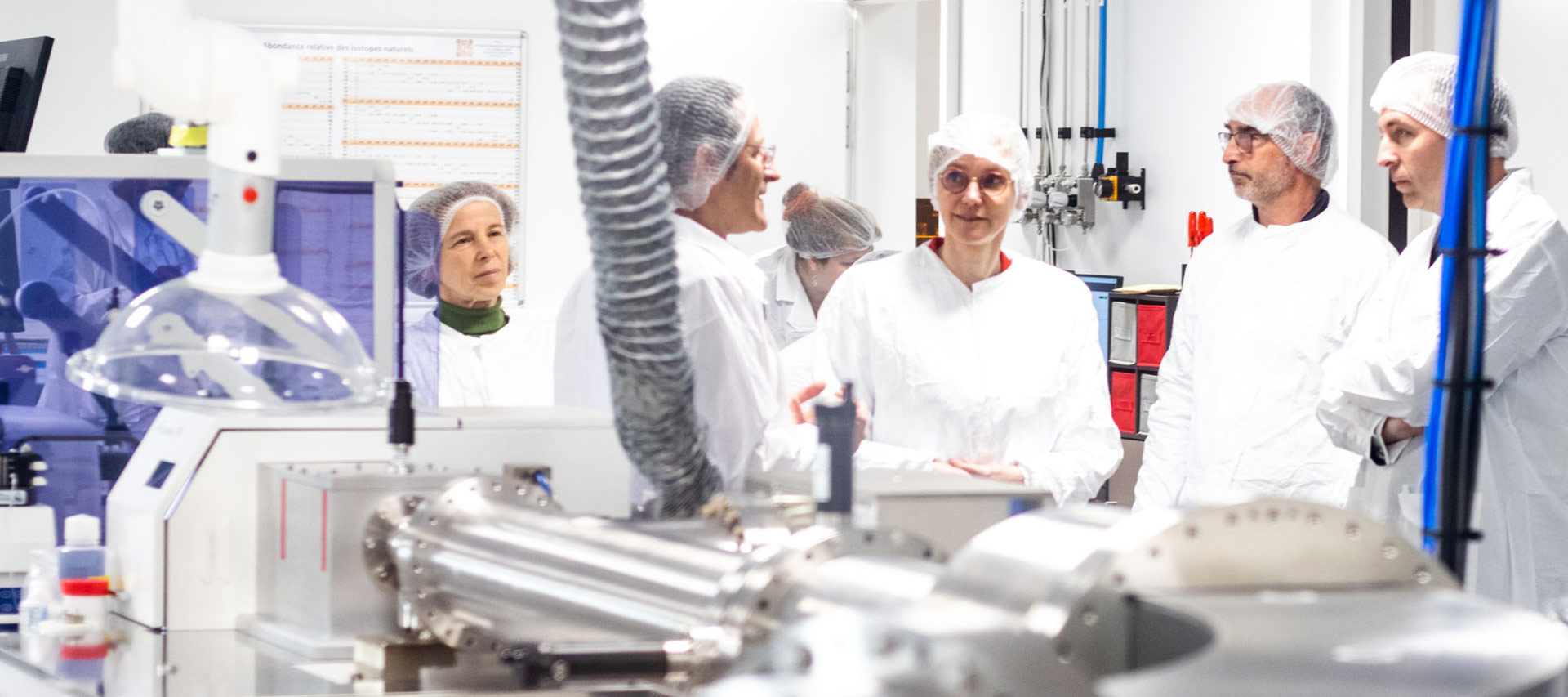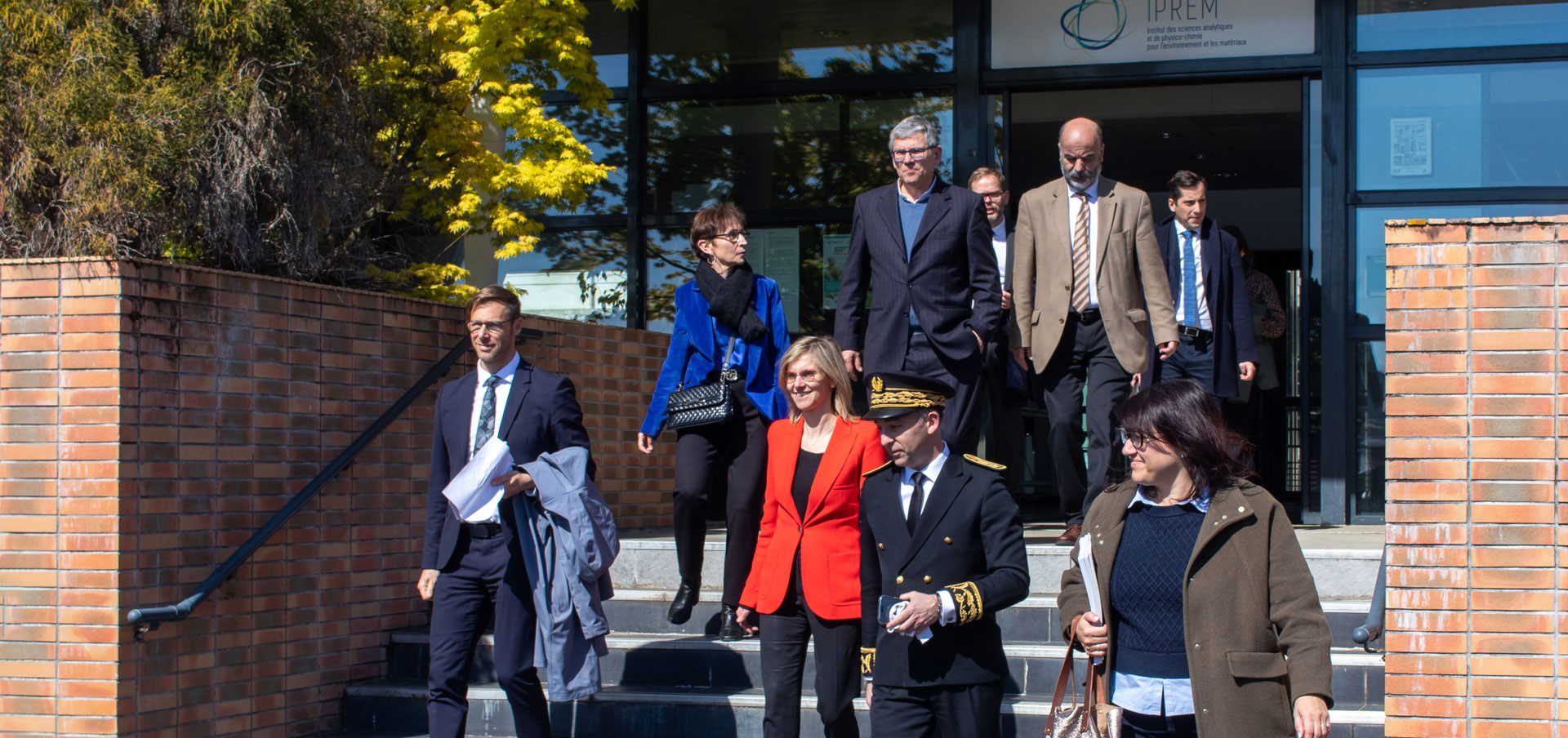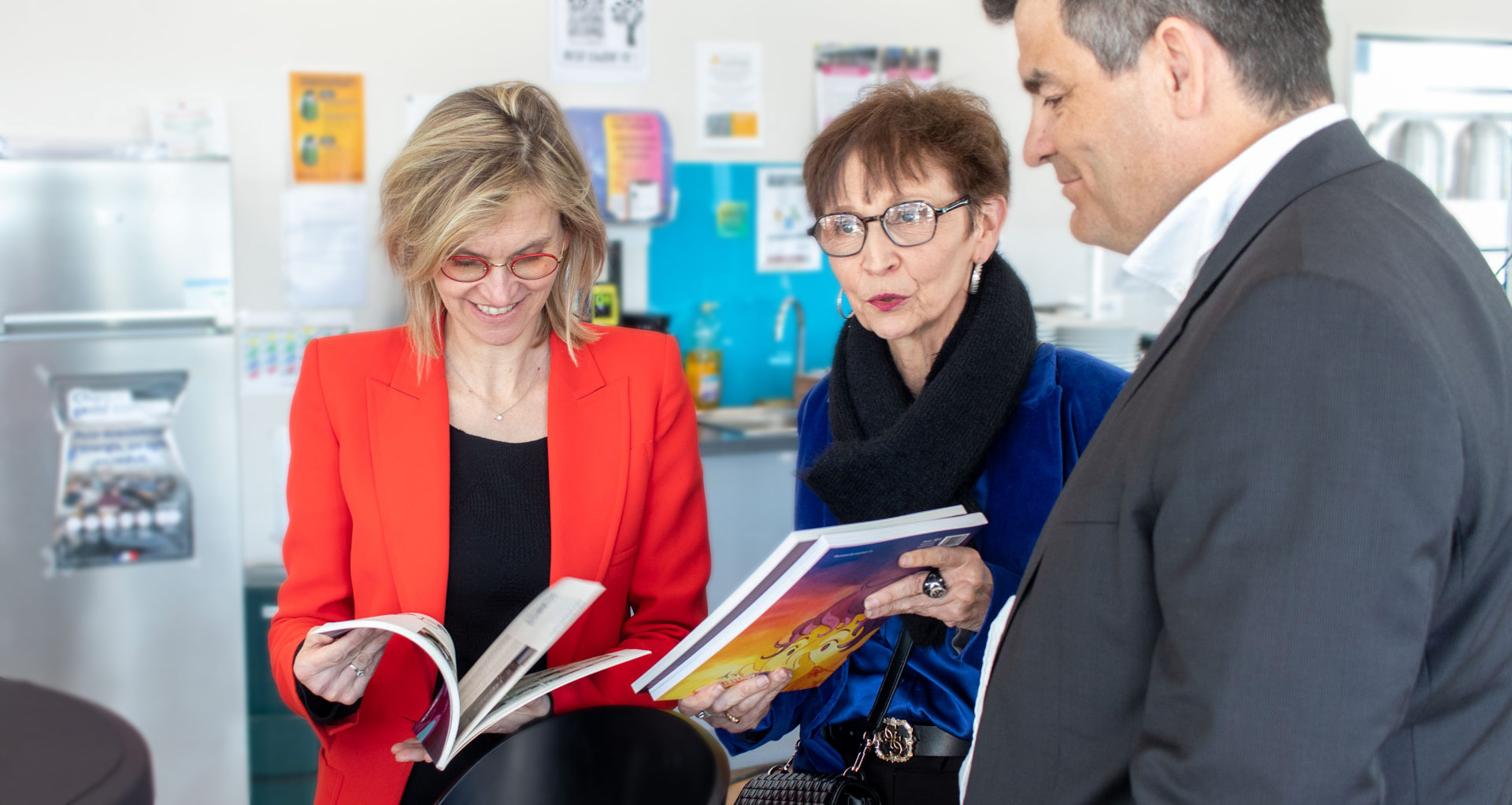Minister of Ecological Transition visits the University of Pau and Pays de l’Adour
17 Mar 2025

During her visit to Béarn on Monday, March 17, 2025, Agnès Pannier-Runacher, French Minister for Ecological Transition, Biodiversity, Forestry, the Sea and Fisheries, visited the University of Pau and Pays de l’Adour (UPPA), which is nationally and internationally recognized for its excellence in the field of energy and environmental transition. She was received at the Institute of Analytical Sciences and Physico-Chemistry for Environment and Materials (IPREM), a joint UPPA/French National Research Center research unit.
Researchers Christophe Pécheyran, Béatrice Lauga and Gilles Bareille first presented their imaging work on ultra-trace detection in the “cleanroom”, i.e. in a controlled contamination environment to avoid distorting measurements. The team works in a variety of fields: biomedical, with research into a new diagnosis of Lyme disease; archaeology, with laser imaging dating methods that do not destroy the sample (snail or ostrich shells, aurochs' teeth, etc.) from archaeological sites in the Middle East or Africa), and the environment, with the tracking of the migration of emblematic fish such as salmon or eels, thanks to the incorporation of trace elements present in the waters they have passed through into the structure of their inner ear (otoliths).

Stéphanie Reynaud, a specialist in nanoplastics, their behavior and their impact on the environment, then spoke about her role in negotiating the International Treaty against Plastic Pollution with other scientists specializing in this field. She also invited the Minister to a side event at the forthcoming United Nations Ocean Conference (UNOC 3).
Christine Bouisset, from the TREE (Energy and Environmental Transitions) social science laboratory, spoke about her research into the management and prevention of natural hazards, particularly forest fires.
Susana De Matos Fernandes then explained how she draws inspiration from nature (biomimicry) to create innovative, bio-based materials. She recovers molecules and biopolymers from fishing waste, transforming them into materials for cosmetics or for use in restorative medicine.
Finally, Laurent Billon, who also follows a biomimetic approach, presented his work on artificial photosynthesis, aimed at producing hydrogen from solar radiation to ensure a region's energy independence.
To round off the event, Isabelle Baraille, UPPA's interim Research referent, and Brice Bouyssiere, “Science with and for society” referent, presented the Minister with the first issues of Ébullition(s), the illustrated research notebook, issue 2 of which focuses on transitions, and more specifically on the circular economy and virtuous construction.
This was a fitting opportunity to showcase at the highest level the excellence of research carried out at a university fully committed to sustainable development and social responsibility.














